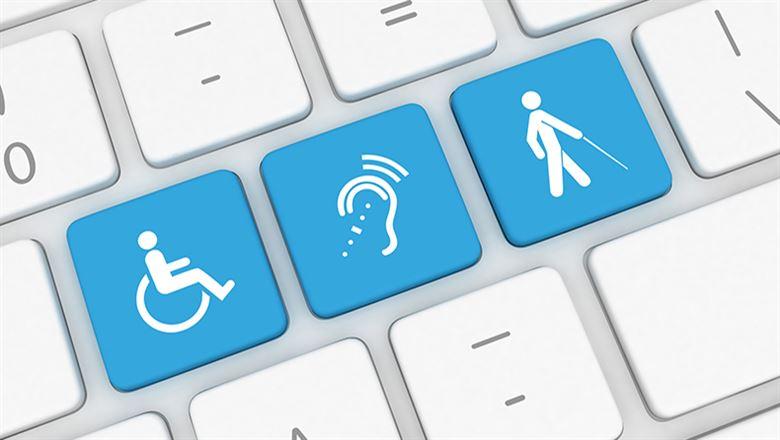Mark Eichler
Mark Eichler is product expert at Higher Logic in Arlington, Virginia, and holds a professional certification in accessibility.

Close to 20 percent of Americans self-identify as having a disability, which can make using a website challenging. In order to engage every user, associations should present accessible web content. The result will be attractive, navigable websites that benefit everyone.
Have you ever had an elderly parent ask you to read some online information to them? Or have you ever found you clicked on the link next to the link you intended to click? If so, you're not alone. While these may seem like minor inconveniences, they may point to the kinds of accessibility hurdles that present real barriers to millions of users.
Although websites are making constant upgrades to performance, design, and content, many fall woefully behind when it comes to accessibility. Websites are routinely difficult or even unusable for people with imperfect sight, hearing, motor control, or cognitive function. What are the most common accessibility problems? For a large percentage, it's issues with eyesight. But for others, it includes problems using a mouse due to tremors, a palsy, or even carpal tunnel. Still others have challenges with focus and memory.
The bottom line: Websites should and can be easy for nearly everyone to use. Unfortunately, standards and best practices can lag behind the challenges presented by new technology. It shouldn't surprise anyone that technology moves faster than bureaucracy. It's up to the providers of web content and experiences to stay current.
Do you know about your members' accessibility needs and how they use your websites?
Wikipedia describes web accessibility as: "The inclusive practice of removing barriers that prevent interaction with, or access to websites, by people with disabilities (permanent or temporary). When sites are correctly designed, developed, and edited, all users have equal access to information and functionality."
The accessibility challenge of today reflects our highest priority for all users: engagement.
Different users require different assistive technology tools (e.g., readers, magnifiers and others) based on individual needs. Accessible websites anticipate that adaptive techniques and assistive technologies will be used to read and interact with web content. Accessibility guidelines help the producers of web content meet these needs in standard ways.
Rather than seeing accessibility requirements as stifling, we need to see them as guidelines to help build attractive, navigable websites that benefit everyone. The accessibility challenge of today reflects our highest priority for all users: engagement.
If accessibility isn't a consideration, then the general user experience will suffer. The "basic stuff" is central to meeting accessibility needs: layout, text formatting, color choices, and labeling. Having accessibility in mind helps web content creators make better choices in general. An overly creative design might look like a modern masterpiece, but may result in users missing something you want them to experience or understand.
It's important to get your organization on board before auditing and adjusting your website. Aside from being the right thing to do, accessibility will improve the overall member experience and qualify your organization's mission, diversity statement, and bylaws.
Once stakeholders see the value, then address what needs to be updated. The W3C accessibility content standards break down the challenge into four categories:
Perceivable. Have text alternatives for non-text content and captions for multimedia. Present content in alternate ways to make it easier for all users to benefit.
Operable. Make sure all functionality is available through the keyboard. Give users enough time to read and use content and help them navigate and find content. Remove content that might cause seizures.
Understandable. Make text readable and understandable. Make content appear and operate in predictable ways. Help users avoid and correct mistakes.
Robust. Maximize content for current and future user tools.
Associations by their very nature and mission should be welcoming to everyone who wants to join. Think about that member who you want to come to your annual conference. Will registration information be accessible? Are your event maps and visual content supplemented with written content? Don't inadvertently exclude people.
And remember, the changes that go along with inclusivity do not have to be overwhelming. Even if you follow every rule, no website will be 100 percent accessible for everyone. Rather than thinking of an ultimate end-goal, think about accessibility as a spectrum. Requirements change, new technologies come out, and you need to be able to adapt and change. It's important to be aware of accessibility needs, listen and continue to educate your members. Your members are content creators on collaborative platforms. Optimally, you work together to foster guidelines and tools for accessibility.
With that in mind, I've put together a Web Accessibility Action Plan for any organization that's ready to address accessibility. Here are the eight steps involved:
An organization that meets web-accessibility needs demonstrates its values for diversity and inclusion. It is so important that everyone can engage.